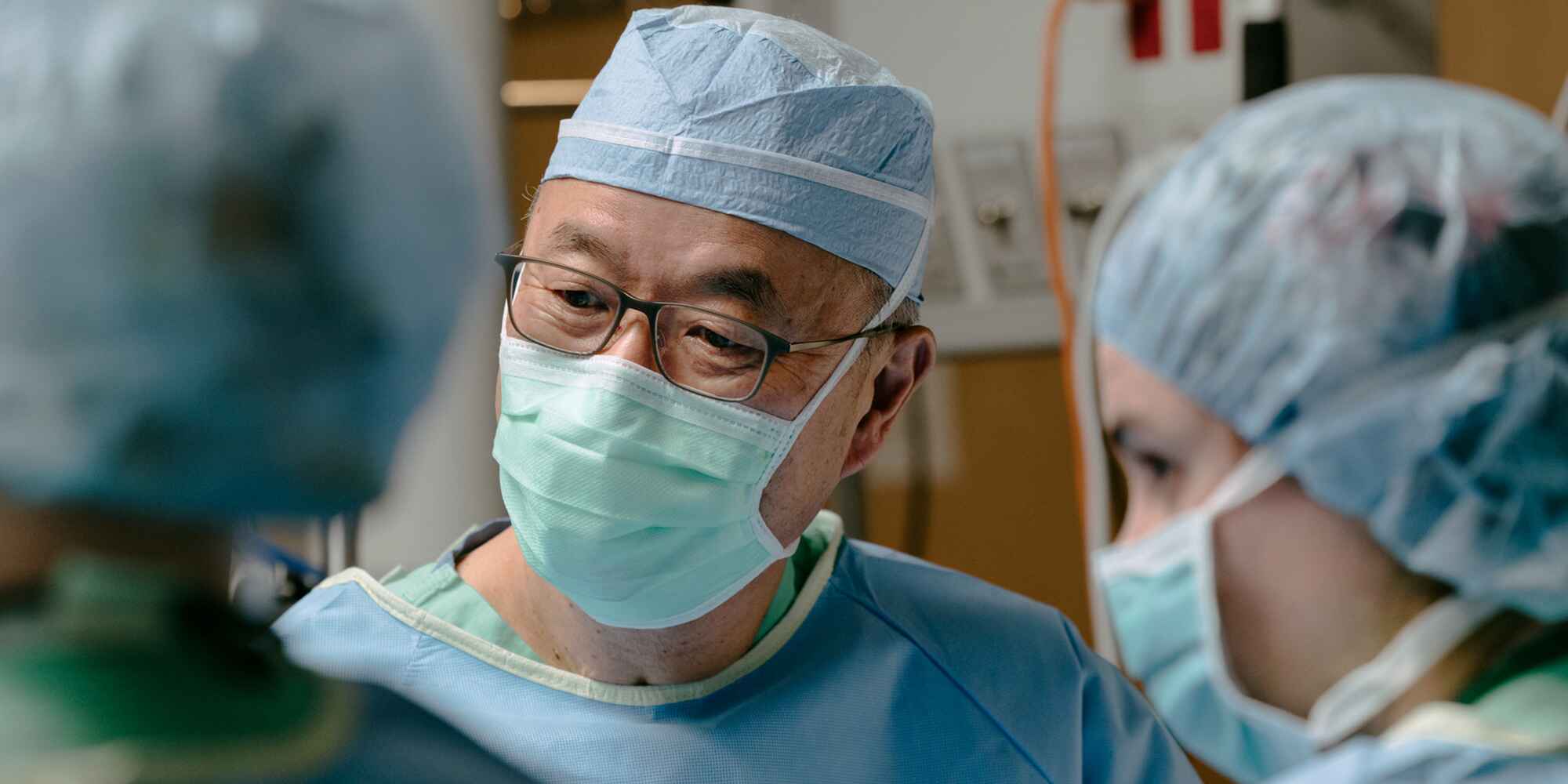Aortic Valve Surgery
Trusted experts work together to tailor care to your needs. When a procedure is necessary, many patients benefit from minimally invasive approaches. These include endovascular aortic repair (EVAR) and thoracic EVAR. These techniques repair the aorta with small incisions that are gentler on the body.
What is Aortic Disease?
Aortic disease is a group of conditions that affect aorta functioning. The aorta is the main blood vessel through which oxygen-rich blood travels before reaching the rest of the body. In early stages, you might not notice symptoms. Some conditions progress slowly and do not require treatment. Advanced aortic disease requires prompt care, typically a procedure.
Conditions Affecting the Aorta Include:
- Aneurysm: A weak spot in blood vessel walls that balloons outward, filling with blood. Find out more about aortic aneurysm and other aortic diseases.
- Dissection: A life-threatening condition that happens when blood leaks out of cracks in the walls of the blood vessel. You are more likely to experience an aortic dissection if you have an aneurysm.
- Valve Disease: The aortic valve regulates blood flow as it leaves the heart. Valve narrowing (stenosis) limits blood flow out to the body. The aortic valve also may not close as it should, causing blood to leak back toward the heart (regurgitation).
Aortic Disease Repair and Surgery at St. Peter’s Health Partners
Our team includes cardiologists, heart surgeons, and vascular surgeons, many of whom completed additional training through fellowships. They work together to tailor therapies to your needs. All our specialists stay current on the latest aortic disease research so you receive the high-quality care you deserve.
Highlights of our Aortic Disease Repair and Surgery Program Include:
- Life-Saving Treatments: Aortic dissection typically requires immediate treatment, and we are here for you. A member of our aortic disease team is always on standby, so you receive prompt treatments in an emergency.
- Heart-Lung Bypass: St. Peter’s Health Partners is one of the only places in the Capital Region offering extracorporeal membrane oxygenation (ECMO). This mechanical system takes over heart and lung functioning during complex aortic disease procedures.
- Comprehensive Treatments: You recover in our cardiac critical care unit. After leaving the hospital, you may participate in our accredited outpatient cardiopulmonary rehabilitation program. Cardiac rehab helps you get back into your daily routine. Doctors, nurses, and therapists are in communication at every turn, so you can focus on healing.
Minimally Invasive Repair and Hybrid Aortic Disease Surgery
We use minimally invasive methods whenever possible. These techniques involve small incisions through which we insert long tubes (catheters) with instruments at the tip. Real-time imaging enables us to carry out therapies with a high level of precision.
Our team also offers hybrid procedures that combine surgical and catheter-based techniques in one procedure. The hybrid approach enables us to deliver safe, timely care to people with complex medical needs. In addition to repairing the aorta, we may also perform a coronary artery bypass graft (CABG) to restore blood flow to the heart.
TAVR and Other Aortic Disease Procedures
Types of aortic disease repair and surgery we offer include:
Aortic Valve Repair and Transcatheter Aortic Valve Replacement (TAVR)
We offer many treatment options for aortic valve disease. Many people get better with repair procedures, like valvuloplasty, which widens narrowed valve openings. Learn more about heart valve repair and replacement.
For severe aortic valve disease, you may need to have the valve replaced. TAVR is a catheter-based procedure in which we implant a replacement valve without surgery. Find out more about TAVR.
Aortic Root Surgery and Replacement
The aortic root is where the aorta connects to the heart. It can become stretched out (dilated) due to valve issues, infections, or smoking. We perform this procedure to replace a damaged aortic root. We may also need to repair or replace the nearby aortic valve.
Endovascular Aortic Repair (EVAR)
EVAR is used to repair aneurysms in the section of the aorta that passes through the abdominal area (abdominal aortic aneurysm or AAA). We use catheters to implant a stent graft, or a hollow mesh device covered in a special fabric. The stent graft reinforces the aorta’s walls, diverting blood flow away from the aneurysm and lowering the risk of rupture.
Fenestrated Endovascular Aortic Repair (FEVAR)
FEVAR is for aortic aneurysms near the kidneys. As the aorta passes through this area, several arteries branch off it, creating a shape that traditional stent grafts can’t accommodate. FEVAR uses a stent graft with fenestrations (holes) that fit the branches of the aorta. The holes allow blood to flow through these branch arteries. The stent graft extends past the holes to reinforce the aorta near the kidneys.
Thoracic Endovascular Aortic Repair (TEVAR)
TEVAR is similar to EVAR. It uses a smaller stent graft to reinforce the aorta as it passes through the chest.

